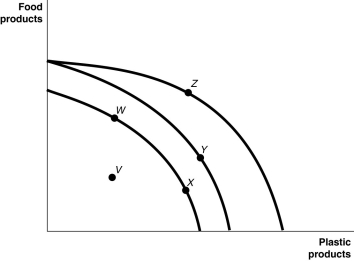Figure 2.4  Figure 2.4 shows various points on three different production possibilities frontiers for a nation.
Figure 2.4 shows various points on three different production possibilities frontiers for a nation.
Alt text for Figure 2.4: In figure 2.4, a graph illustrates 3 different production possibilities.
Long description for Figure 2.4: The x-axis is labelled, plastic products, and the y-axis is labelled, food products.3 convex curves are shown, with points V, W, X, Y, and Z plotted.The first curve begins just past the half-way point on the y-axis, and ends just past the half-way point on the x-axis.Points W and X are plotted along the curve, with point W approximately 1 third of the way from the start of the curve, and point X more than 2 thirds of the way along the curve.The second curve begins almost 3 quarters of the way up the y-axis and ends just past the termination of the first curve on the x-axis.Point Y is plotted on the second curve, approximately 2 thirds of the way along the curve.The third curve begins at the same point as the second curve, and ends approximately 3 quarters of the way along the x-axis.Point Z is plotted on the third curve, a little less than half-way along the curve.Point V is plotted between the first curve and the origin.
-Refer to Figure 2.4.A movement from X to Y
Definitions:
Required Production
The amount of product that must be produced in a specified period to meet customer demand and inventory policy.
Cash Collections
The process of gathering and accounting for all cash received by a business during a specific period of time.
Cost of Goods Sold
The direct costs attributable to the production of the goods sold by a company, including material and labor costs.
Merchandise Inventories
Goods that are held by a business for the purpose of resale to customers in the ordinary course of business.
Q21: Which of the following serves as a
Q53: _ a nation's production possibilities frontier represents
Q72: How has the growing popularity of on-line
Q120: Refer to Figure 2.4.Consider the following events:
Q226: What is the law of supply? What
Q240: Refer to Figure 2.12.Suppose worker productivity increases
Q268: What is the ceteris paribus condition?
Q279: On a diagram of a production possibilities
Q281: Which of the following are separate flows
Q299: The unattainable points in a production possibilities